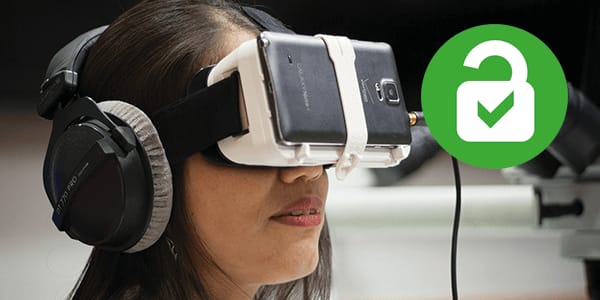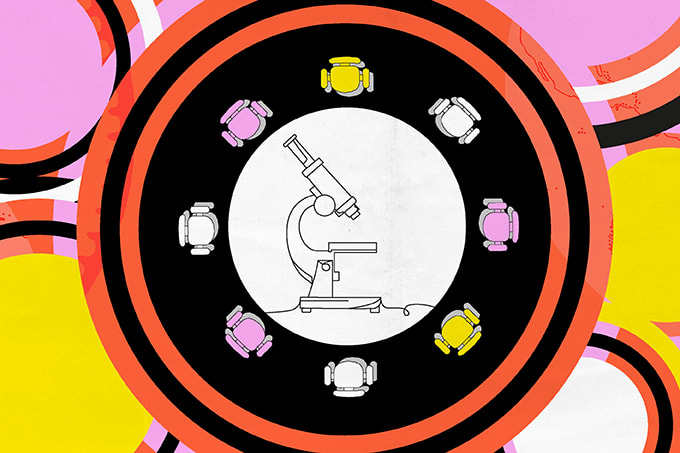The pathologists’ assistant program at Tulane University School of Medicine is a unique educational experience designed to offer students both essential training and the flexibility to pursue their own interests. Sarah Garner describes how she established the program – and why it’s a necessity for the evolving laboratory.
If pathology is an oft-overlooked field of medicine, then the role of the pathologists’ assistant (PA) is even more obscure. Many healthcare professionals, even those who regularly interact with the laboratory, are unaware of our existence – or, even if they know our names, may not be aware of our role in the lab. This lack of visibility presents a problem – not just for our ability to work alongside other medical professionals, but also for our ability to attract new students to our profession. Add to that the dearth of PA programs available to students and it becomes clear why I felt the need to establish a brand-new pathologists’ assistant program at Tulane University School of Medicine. I wanted to give aspiring PAs in the southern United States the same opportunities as those elsewhere. The program grants students a Master of Science in Anatomic Pathology and sets them up with the training they need to become successful PAs.
The PA program at Tulane is designed to have a unique, flexible curriculum so that each of our students can get the education they need to pursue their individual career goals.
The mandatory component of the program has all the standard classes: anatomy, histology, embryology, physiology, general and systemic pathology, surgical pathology, and autopsy pathology. During the first year of the program, students not only take these classes, but also start clinical rotations in both surgical and autopsy pathology. Our first-year students are only about six months into the program, but have already had the opportunity to be in the surgical pathology lab and gross real cases such as limb amputations, placentas, and appendixes. The transition from a fully didactic first year to a fully clinical second year can be a challenge for some students, so our goal is to facilitate a smoother transition and simultaneously put less of a burden on our clinical preceptors at the various rotation sites.
In their first year, students don’t just learn the basic science coursework. They also begin learning how to identify various disease processes and tumors by their gross features, what specimen types to expect for each pathology, and how to gross them. We have a surgical pathology lab course series where the students practice each of these dissections on either fixed cadaveric organs or fresh organs from animals. Then we reinforce this knowledge during their clinical rotations in first and second year.
The flexible part of the didactic curriculum includes additional elective courses on any topic of interest to the student, the option to participate in basic and translational science or educational research, and – my personal favorite – the teaching practicum. Through the practicum, students can participate in both clinical and didactic teaching activities to gain teaching experience, allowing them to develop a teaching portfolio that they can use when applying for jobs after graduation. I’ve heard from a lot of pathologists’ assistants who are interested in teaching, but cannot get hired or find opportunities to get involved; one of the problems is that institutions are hesitant to hire someone without teaching experience. By providing that experience and portfolio, we ensure that students have the background they need to apply for educational positions. In my opinion, teaching is an important skill for every pathologists’ assistant, whether in an academic position or not, but unfortunately many of us did not receive any formal training. The practicum is our way of addressing that gap – but it’s optional so that students who don’t want to teach in the future don’t have to participate.
Not all of our program’s highlights are purely educational, though. We are located in a city filled with culture and fun! New Orleans is a wonderful place to live and the Tulane community is a unique place to learn. Our students can take courses with students and faculty of all levels and backgrounds, as well as learn with – and even help teach – our pathology residents.

My goal in creating the program was to promote pathology and the pathologists’ assistant profession in the South. When I was in PA school, I found it really discouraging that there were minimal clinical rotation sites in the region. I went to Tulane for my undergraduate and graduate education before attending PA school, so I contacted them about starting a clinical rotation site for PA students. They had never even heard of a pathologists’ assistant – something I quickly learned was common in the South! I knew that this had to change, so I completed my clinical rotations there while also teaching a gross anatomy class in the evenings. The faculty that taught me at Tulane during my clinical rotations were so wonderful and passionate that I wanted other students to experience their enthusiasm. I immediately started developing the curriculum for a PA program and planning ways to increase my teaching skills so that I could eventually start the program I had in mind.
As I’ve worked on developing the PA program, I’ve realized that our profession is often misunderstood and underutilized. PAs have a unique skill set – one that I feel isn’t being used to its full potential. I want to provide unique opportunities for PA students and other PAs so that they have the educational background, confidence, and mentorship to be able to grow with the ever-expanding scope of our work.
The number of applicants we had for our first class was impressive. I wasn’t sure what to expect because we are not yet accredited, so I was pleasantly surprised to see so many fantastic applicants. Interestingly, the vast majority of our applicants reported hearing about the program through social media – and I think it’s clear that the role of social media in advocacy and education will only grow more important. It’s exciting to see an increasing number of people becoming interested in pathology; our second application cycle recently opened and we already have a lot of applicants. We have also heard from various institutions seeking to hire our students after graduation. The goal for our program at Tulane is to advocate for the profession in the South, to increase the number of labs and institutions hiring American Society for Clinical Pathology-certified PAs, and to provide educational opportunities to students in the South. Even though we have only just started, I am already seeing a positive impact in Louisiana and other states, which is very encouraging.
From a personal perspective, I have never experienced anything more rewarding than teaching (not even getting the ampullary section on a Whipple!). If you had told me 10 years ago that I’d be teaching now, I would probably have laughed – but now, with my passion for teaching, pathology, and anatomy, I can’t imagine doing anything else.

My advice for students interested in becoming PAs is – shadow! Because pathology, and especially the PA profession, is typically misunderstood (not only by the community and the media, but also by other medical professionals), it’s important to experience it firsthand. I know PAs who went to school believing that PAs and pathologists only performed autopsies – and thinking that was going to be their lifelong job. Luckily, those people ended up loving surgical pathology as well.
It is a wonderful field, but you want to make sure it’s right for you. The best way to do that is by getting experience, ideally hands-on (whether paid or by job-shadowing), but at the very least by talking to people in the field. If you’re having a hard time finding contacts in pathology, reach out to any PA or program director. The pathology world is pretty small, so even if I can’t help someone directly, it’s easy for me to reach out to other PAs who can. In fact, I’ve had students reach out from across the country trying to find someone to shadow. Of course, coming to New Orleans was impractical for most of them – but when I asked the PA community if anyone was willing to help, I found an eager volunteer in most cases. There are many ways to find information or get involved – you just need to ask; you’ll find that most people in pathology are more than happy to help!
When I was first learning about the profession, there were very few resources, which is why I now try to promote the profession on social media. There are plenty of other PAs and pathologists who are actively engaged in social media, so the information is freely available. The American Association of Pathologists’ Assistants also does a wonderful job of providing information to those interested in the profession, so there are a variety of avenues to pursue for those who want to learn more.

Pathologists’ assistants are willing and able to do a lot more than gross specimens – and, as I mentioned earlier, I believe our knowledge and skill sets are vastly underutilized. Furthermore, most PAs are dedicated, passionate people. Even though we work behind the scenes, we care about our patients. I can’t even count the number of PAs I know who constantly go the extra mile because they know that what they do directly affects patients.
People may assume that those of us who work in pathology chose the field because we don’t like interacting with others. For the PAs I know, this could not be further from the truth. Rather, people choose the PA profession because they care immensely about patients; many prefer to work behind the scenes so they can help in a less emotional way. (In fact, that’s one of the reasons I chose it.) In addition, those of us who work in pathology actually talk to a lot of people throughout the day. Pathologists, PAs, and other laboratory professionals are constantly in contact with not only each other, but also other medical professionals.
There’s so much potential in the laboratory – and every prospective student should know that. It’s my hope that future PAs, other pathologists, and even medical professionals in other fields will learn what PAs do, what’s involved on the road to joining the profession, and how vital our role is in the care of patients.




